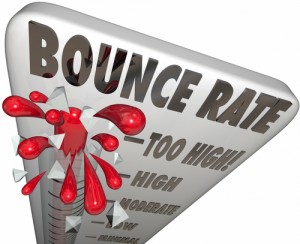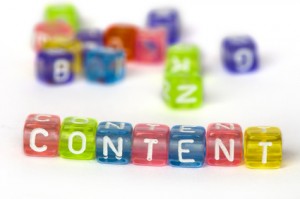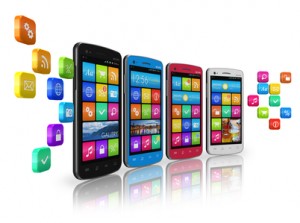Retargeting - 33 unbeatable techniques | Weboptim
What is retargeting and why should you do it?
Let's take an example: a user leaves the website without converting. We add a cookie to their browser or capture their email address during their visit so that we can then follow them around the web with qualified text ads until they hopefully come back to our site and convert.
Some people call this remarketing. Retargeting is essentially exactly the same thing as remarketing, although Google is reluctant to call it remarketing.
Retargeting spans all digital advertising channels.
Studies show that the average CTR for retargeting can be up to ten times higher than for traditional visual advertising, and that retargeted visitors are 70% more likely to convert than those who are not retargeted.
Retargeting is easy to use, but it is difficult to set up to work well. The key is not to put all users in a group and show them the same message. Many people do this.
Let's see what the main types of retargeting are:
1. Sequential Retargeting (Sequential Retargeting)
Is the sales cycle long? Is it a complex buying process with multiple touch points? If yes, then serial retargeting is the best solution.
The idea is to sort the audience into different categories or lists and then add/exclude them based on what the landing page was, how long they were on the page or what download they viewed.

When the 'action' happens, they will be targeted as the next stage in the conversion process, so they will see a new ad, while being excluded from the audience of the old ad. Put simply, with retargeting like this, we create multiple touch points in the conversion process and when someone crosses one, we exclude them from the old stage and only show them ads from that stage.
An example of such a series of advertisements could be:
- we show him special offer products
- customer service is advertised
- previous ad only with a different design or text
- we offer new customer offers
- we convey a brand message
- we communicate special product benefits
Summary: Sequential retargeting operates by varying ads and messages depending on where the visitor is in the conversion process. As advertisers, the goal is to leverage different features and benefits in order to convert them into customers.
2. Time Delayed Retargeting (TDR)
If you are using any cookie-based retargeting, a good option is to add an expiration date (Google caps the expiration time at 540 days).
But in this case, time is our friend, not our enemy.
Similar to the previous type, time-delayed retargeting works without the user having done any activity on the site, just seeing the ad. The best thing about this type is that you don't need any accompanying landing pages to cover what the ad says.
If we only offer one service, we can use different delayed ads to show the benefits of working with us.
An example of how we could get people to ask us for a free proposal:
- Week 1: example of a proposal
- Week 2: screenshots of Adwords improvements
- Week 3: presentation of our different offers
- Week 4: case studies
- Week 5: example of a proposal
Summary: The longer the user is part of the delayed retargeting campaign, the stronger the incentive offer we need to show them. For the first two weeks, it may be enough to just recommend your product. In the next 2 weeks we need to give more e.g. 10% discount, bonus, but here we need to exclude those who convert, it is important that they do not see this discount offer.
3. Offer Change Retargeting (Offer Change Retargeting)
If you are in the unfortunate situation that 98% of your visitors do not convert after the first visit, don't worry. We might still be lucky. Many times, when people choose not to convert, it's because the offer is too scary for them or because we haven't explained the value of the offer well enough to them. They may not be ready for a free consultation.
When this happens, we use retargeting advertising, not just to get more conversions, but as a research tool to find out if the landing page offer needs to change or if something else is wrong.

Let's look at an example: our landing page advertises a free consultation for PPC traffic, but the conversion rate is only 2%. In order to target the remaining 98%, we need an idea that will make them want a consultation after all - e.g. coupon, quiz, video, email course, ebook, t-shirt, case study, infographic.
Summary: There is a reason why most people do not convert on your site or landing page. It could be because we don't explain the offer well enough, or another offer would work much better. Important: visitors have more choices and we are not the only ones providing this service. Take the time and effort to do this.
4. Up-Selling Retargeting
If someone has bought from us before, they're more likely to buy from us again. Research shows that returning customers spend five times as much time on the site as new customers.
The idea is to simply create a new retargeting audience of people who have already visited your post-purchase thank you page and offer them various related services or products.
Summary: If someone has already bought from us, they trust us. Don't feel greedy just because we ask them to convert again or buy something at a higher price. If we bring real value to the product or service, they will be angry if we keep it a secret from them.
5. Cross-selling (Down-Sell/Cross-Sell Retargeting)
Sometimes our customers no longer want to buy from us. In such cases, show them different products to give them a 'thank you, not a reaction' up sell offer.
For example: someone has ordered our PPC service. As an agency, the next logical step for us is to offer a landing page service through this. The beauty of cross-selling is that it complements the original thing that the customer bought and also helps to boost performance.
If you want to achieve down-sell related to the landing page service, offer them a free guide with the aim that they will convert in the future.
Summary: If someone buys oranges, we can sell them a juicer. If someone buys a juicer, we can cross-sell them a recipe book. If someone does not buy a juicer, we can sell them a book on orange peel art.
6. Layer Retargeting (Layer Retargeting - Google Analytics Features)
We have used it to Google Analytics data to create a unique retargeting audience? If not, here's a great opportunity.
We can increase the average order rate by up to 13%.
Summary: We use Analytics to create unique retargeting audiences based on different data (e.g. geographic location) and target them with unique ads.The more data we have about a particular group of visitors, the easier it is to determine the likelihood of them converting when they see your message.
7. Page Value Retargeting ( Page Value Retargeting)
Each sub-page on the website has a different value, which is the ROI of retargeting. If the visitor only visits the main page and no other pages, there is a good chance that retargeting will be a waste of time and money.
From one-time visitors to those who spend at least 2 minutes on the landing page or site, it is important to offer them an offer that is proportionate to their activity. For clicks from visitors who spend more than 2 minutes, pay an average of 100 cents per click rather than 50 cents per click.
The value of audiences is different. Those who return from the main page for a lower risk offer e.g. ebook download will convert better, whereas +2 minute visitors will accept a free offer.
Summary: Let's check in Analytics which subpages of the website are getting the highest traffic. Then add additional criteria e.g. specific url, time on page or geographic location to create even stronger audiences and retarget them.
8. CRM retargeting
CRM (customer relationship management) is a tool often used by companies. For a CRM-type retargeting campaign, we don't need cookies, it works on the basis of an email address.
We can export the email addresses in our CRM system, link them to their social profiles and then target them either in their social media profile or in other platforms (e.g. gmail) where they are logged in with that email address.
Summary: CRM systems tell you a wealth of information about your visitors. Use this data to create retargeting audiences.
9. Email retargeting (Bulk Email Retargeting)
You can also target your audience by email list in Adwords, Facebook and Twitter. This feature of Adwords is Customer Match, and for Facebook Custom Audience-is called.

The most important thing to keep in mind with this type of email is how many people on the platform are using the email address you provide. Once you have decided which platform(s) you want to advertise on, you can target by different ad types and networks (such as Google).
Summary: Remember to channel the segmentation power of your audience in specific directions. Targeting all email addresses with the same message is not as effective as dividing it into smaller segments.
10. Individual Email Retargeting
Many people don't know that you can add a hidden HTML image tag to the email, which will give the browser a cookie when the user opens the email.
If we send out promotional offers via email, we can create a separate ad for those who open the email, so that opening it triggers the promotion. A retargeting ad in this case therefore provides the targeted users with a quick way to access the offer, rather than having to go back to the original email and search for the offer.
However, this type only works for web-based email providers (such as Gmail or the Hotmail), and we need to make sure that the recipients allow the images to be displayed in the emails.
Summary: If you want to increase ROI in certain email marketing campaigns, you should strongly consider using such hidden HTML image tags.
11. Similar/Lookalike Audience Retargeting
When you create a target audience, PPC tools such as Adwords or Facebook give you the opportunity to create a similar audience of users who share the same browsing habits as the members of your list.
We can target similar audiences with simple retargeting campaigns, even those who have never been to the landing page or website.
Summary: Often the size of a similar audience can be much larger than the original retargeting list. This allows you to target more users.
12. Push-Along Retargeting
Do we have a conversion channel that has multiple touchpoints through which users can go to the next step? If so, push-along retargeting can be a good friend.
Just as with each keyword, you can measure how far the user gets in the conversion process. The goal here is to get them to the next step with strong ads, and so on.
It is similar to serial retargeting, but it focuses solely on performing the action in the conversion process. There is no time or other external factors.

Summary: Make sure the size of the target audience is large enough at each conversion stage. If you have less than 1000 visitors at each conversion point, you may not get enough impressions, clicks or conversions.
13. Geographic Granularity Retargeting
Just because we advertise at a national or international level doesn't mean that our retargeting ads have to run at the same level. For PPC ads, you can choose where you want to target visitors from.
You can create retargeting ads for your audience with specific geographic settings. This can be paired with a landing page that delivers a related message.
Summary: Take the geographic location with the highest number of visitors and advertise there.The higher the number of impressions achieved, the higher the chance of a click converting into a conversion. If successful, repeat the process with custom retargeting ads and landing pages.
14. Redirect link retargeting
This type allows you to put those who click on a specific link into a separate retargeting audience. It can work well in the following areas:
- Our site is a comparison site with several options. By creating retargeting audiences, we can achieve more conversions.
- If your company has a unified email signature, you can track clicks on the links in it and create a unique audience based on that.
- You can do the same through forums, blog comments.
Summary: This solution is ideal for both individuals and businesses if you want to measure and remember users who go to places you no longer have control over.
15. RLSA retargeting
From RLSA (Remarketing list for search ads) was introduced in 2012 as a Google novelty. Its essence is that it allows you to create special text ads that can only be seen by the retargeting audience. This allows you to add different offers to your search and shopping ads.
An example of an RLSA: we are in a small industry and want to advertise on behalf of our competitors, but we only want to appear if the visitor has been to our site before.
Summary: if you want to use RLSA, use regular bid modifiers for retargeting audiences and select "bidding only" in your Adwords settings. This will allow you to be a little more aggressive with people who have already been to your website.
16. Anti-bounce retargeting
If you look in Google Analytics, you can find the bounce rate indicator.
If the bounce rate is between 60-80%, then why put 60-80% of the retargeting budget into reaching people who are not even interested in the topic?

Instead, create a "cookie insertion delay" for part of the time (60 seconds or more). This will only count users who have been on the site for at least the specified amount of time.
Summary: Turning back is not necessarily a bad thing. It's especially good if you have a separate landing page (without outbound links) where all exits are considered a return.
17. Non cookie retargeting (Non cookie retargeting)
As more and more people use mobile browsers, often anti-ad platform, it is easy to see that traditional cookies expire or are deleted relatively quickly. While it is still in its infancy, non-cookie-based retargeting is becoming increasingly popular.
If we find that current retargeting cookies are not working the way we want them to, here's what we can do: fingerprint-based retargeting is similar to ID-based retargeting for mobile, where we identify visitors based on specific pieces of identifiable information across devices.
So, cookie-free retargeting allows us to access data such as browser type, installed software, time zone, IP address and much more through different devices.
Summary: Do you know why Google was so in love with the idea of a social media network? Because companies like Facebook are leading the way in cross-device retargeting, thanks to the fact that a large percentage of users log into their Facebook accounts on both mobile and desktop.
18. Dynamic Retargeting (DR)
With dynamic retargeting, you don't need to create individual image and text ads for hundreds of products or offers. Adwords or Adroll offers different templates that extract information from the shopping feed, such as image, price, contact details.
Retargeting cookies remember which product pages we have visited and then we can see dynamic ads that only include the products we have enquired about.
Summary: With Google Adwords and other retargeting advertising systems, you can create dynamic retargeting ads that appear instantly on display networks or social media. You can also use delayed retargeting.
19. Content Retargeting (Content Retargeting)
A content retargeting campaign is a great way to increase trust and future conversions. Here's how it works:
- We create a retargeting audience that targets people who have read a particular blog post or content on the site.
- We create a target audience of people who are interested in our product or service.
- We create image and text ads that are an addition to your content, or content that you're likely to like, or better still, an easy offer such as a free guide.

Summary: Content retargeting is the most commonly used solution to nurture and increase trust between the visitor and the brand, and does not necessarily aim to achieve direct conversions as other retargeting campaigns do. It works particularly well for companies with a long buying process.
20. Referral retargeting
What if our visitor knows another person who would benefit from our product/service? Wouldn't we want them to let their friends and community know about it? Of course.
Once a conversion is achieved, a new audience can be created based on the post-conversion URL, which puts the audience into a 'referral' group.
In our image and text ads, we can show a unique message, for example, that you will receive a 10% discount for every person you invite. We can direct them to a separate landing page and this is a vital issue, as we need to make it super easy for those who have already converted to easily send the link to their community.
Summary: The type of referral content you receive depends on the type of company you are. B2C companies tend to have a high reach and are potentially comparable to B2B companies that have a lower customer value.
21. Social Retargeting (Social Retargeting)
It is a retargeting opportunity that every advertiser and marketer should take advantage of. You can build specific retargeting audiences through social platforms like Facebook or Twitter. Go to Adroll is one of the leading social retargeting networks, targeting Facebook, Twitter and other public website networks.
LinkedIn also has its own retargeting solution, the Lead accelerator, which can be used within your own network.

Summary: Many traditional PPC channels, such as Adwords or Bing, do not have access to the advertising network of the various social networks. Use social network directly or third party type tools to manage multiple campaigns on one platform.
22. Competitor Retargeting ( Competitor Retargeting)
Among other things, Adwords also gives you the opportunity to target audiences based on the content they have viewed, the browsing habits that have led them to a competitor's website.
A Retargeting Base for example, is a good solution for pre-retargeting, where a cookie is added to users who have visited a competitor's site. Is this ethical/legal? Probably not, but it's certainly been tried a lot. Here are the options we have:
- Adwords RLSA targeting on competitors' names, keywords
- With Adwords Gmail sponsored ads, you can bid separately on competitors' names as keywords
- Adwords search/display campaigns - show ads based on keywords.
Summary: This type can place retargeting code on competitor sites.
23. Partner retargeting
Partner retargeting is based on a partnership between 2 websites that allow them to use each other's cookies. I'm sure everyone has come across a website that only sold cars that was interested in retargeting visitors from websites that either sold engines or vice versa.
Perhaps a better example is cooperation between flights and hotels. Both are separate companies, but they can offer each other complementary deals.
Summary: Affiliate retargeting actually allows you to borrow visitors from another website in exchange for a fraction of the usual retargeting costs.
24. re-engagement retargeting
There are older visitors who do not do any activity, either already have an email address or are already on our list.
The tactic comes from the world of email marketing, but works like retargeting ads. We send them an email to let them know they've been here before, and if they visit us again within a certain time, they can get a discount. You can decide whether you want to reach them via email or another channel.
Summary: Old customers already know us, we just need to remind them why they should love us again. Let's use re-engagement retargeting to breathe new life into old subscribers and keep visitors coming back as a result of new offers.
25. Search Retargeting (Search Retargeting)
Have you ever thought about targeting users who have never visited your website, but the keywords they are searching for are interesting to you? With search retargeting, you can do this with image and text ads.
This is because search engines place a retargeting cookie on every search that communicates data to ad networks and campaigns.
Summary: If your business is suffering from high CPC costs, search retargeting can help you get cheap clicks.
26. YouTube retargeting (YouTube Retargeting)
A Youtube is the second largest search engine in the world, with cheap display costs and Trueview ads.
We can create video ads, which gives you the opportunity to enter additional audience data to refine your targeting. The only downside to this type of retargeting is that it is not as easy, quick or cheap to test whether static display ads or video ads perform better.

Summary: Besides traditional display and social retargeting, YouTube is the 3rd channel where you can reach your audience effectively.
27. Browser Tab Switch Retargeting
Retargeting type that can be used without cookies or fingerprinting. The browser window address changes when you try to leave the page. However, the solution is still secret.
Summary: A classic example of off-page thinking - we use this feature to retain visitors and get them to spend more time on the site.
28. Onsite Retargeting (Onsite Retargeting)
A common form is pop-up windows that appear when you scroll down or when you want to leave the page. Their purpose is to show you the benefits of our offer, or to give you a discount, or to subscribe them to our blog.
Summary: If you are thinking about onsite retargeting, you have a wide range of options to choose from, with different messages and offers to target your audience. Duration, frequency, scrolling depth, device and other factors can all be set.
29. push notification retargeting
A PushCrew allows visitors to receive notifications from us in their browser, no matter what website they are on, we can notify them when a new blog post is published.
As competition increases and concentration decreases, we need to think about how we can reach users beyond email messages or advertising space.
Summary: Even if the user's browser is closed, push notifications are still displayed.
30. Abandoned Cart Retargeting
If you have an eCommerce site, you probably have a shopping cart abandonment. As business owners, our goal is to convert these into purchases. A good way to do this is through email retargeting, which takes visitors back to the cart they saved. We can bring back up to 3-11% cart abandonments.
We can use various tools to collect the email addresses that users provide during the ordering process, registering the person regardless of whether they have gone through the entire purchase process.
If they do not complete their purchase, an automatic email will be sent to them with pictures of the products in their basket and an invitation to return to the basket.
Summary: Cart abandonment is big business for eCommerce websites. Without giving a discount or a unique offer, you can restore sales by reminding users that they haven't completed their purchase.
31. CPA retargeting
Retargeting allows you to mix different bidding strategies: CPC, CPM, CPA.
CPA means pay per conversion bidding. You can specify a maximum amount you are willing to pay for a conversion, whether it is a download, lead generation or any type of conversion.
Summary: If you want to take advantage of CPA bidding, remember that other retargeting campaigns should be put on hold for this period. We don't want different campaigns competing against each other and driving up the average CPC.
32. Mobile app retargeting ( Mobile App Retargeting)
How can we target people who have downloaded our app instead of offering them a discount within the app? Retargeting is the cheapest and most effective way to reach new users in the mobile app world.

Someone has already visited the app page or landing page but has not downloaded it. We retarget them to download our app.
If someone has already downloaded, the next goal may be to make an in-app purchase.
Regardless of the goal, mobile app retargeting can take advantage of traditional platforms and even provide more insights by integrating a tracking and advertising system into the app.
Summary: Mobile app retargeting is a good opportunity for growth. More and more companies are creating new mobile ad formats and leaders like Google and Facebook are making it easier and easier to track from an app perspective. Mobile deep linking is now an option if you want to drive users to a specific location in the app.
33. Smother Retargeting
Many techniques tell you to use a frequency limit (the number of ads displayed to a given unique user in a given period) to avoid annoying users.
But what if someone breaks the rule and achieves a higher ROI? That's where smother retargeting comes in, with a single goal: to reach users as often as possible.
Use different retargeting networks (Adwords, Adroll, etc..) to reach visitors everywhere they go (general pages, FB, Twitter). Then we can go one step further and put these users into separate groups as almost converts. They may have started to fill out the form or were on the order page but didn't end up buying.
Summary: The goal here is to reach the audience many times in a short period of time to see if we can reduce the time to conversion from the time the visitor first sees the ad. Make sure you retarget visitors in all potential areas after they leave your site.
All retargeting methods use the same practices as any online advertising campaign. You need to test your ads and target criteria to have an effective retargeting campaign. Which one would you like to try?
Did you like the article? You can share it here!
Source: clientboost.com